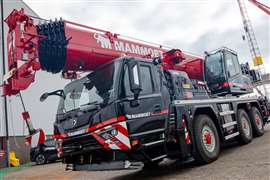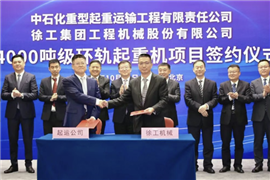Minnesota Twins ready to play ball at new 40000-seat Target Field
05 April 2010

Target Field is complete and the first game will be played on April 10. Building the stadium was a challenge for steel erection contractor Danny's Construction.
The punch list at the new Minnesota Twins' Target Field is complete and fans are counting the days until opening day at the brand new 40,000-seat outdoor baseball stadium.
At Shakoee, MN-based Danny's Construction, the steel erection contractor for the gorgeous new facility, the construction team recently reminisced about the challenging aspects of the project, specifically how it had to be built from the "inside out."
The project involved high and heavy work in a tight space, says Chris Rust, vice president. "The type of work was the reason we were selected," he says.
"Our focus is work on complex structures and schedule-driven projects. Challenges that rule out the competition, that's when we come running in."
Danny's Construction is also quite familiar with stadium projects, completing the steel erection on Soldier Field in Chicago, IL and the Wild Arena and Metrodome in Minneapolis, MN.
Several factors made the Target Field project challenging, including the horseshoe-shaped design of the structure; a small downtown jobsite with restricted access on all four sides; and the installation of a complex cantilevered sun shade that surrounds the top of the ballpark structure.
"The sun shade was particularly challenging," he says. "It was a shop-assembled structure that was delivered in several pieces. At every connection there was a different challenge."
The sun shade is supported by trusses, and it changes shape as it runs around the stadium. "Every point of connection was a little bit different," says Rust. "Each piece was oddly shaped and had an odd balance.
"Plus we had to work from the field because there wasn't access on the outside of the stadium."
The stadium's steel erection started in June 2008 and was handled with two cranes, a Manitowoc 2250 and a Manitowoc Model 999. Early in the job Rust says two tower cranes were erected by the general contractor, Mortenson.
The tower cranes did most of the concrete work. "Early on we used the tower cranes on some of the lower bowl features, but for the most part our work required the work of the crawlers."
Rust said the bulk of his company's contract ended in December 2009, although they moved the cranes out in late August 2009. "They wanted to plant the grass in the outfield so they could have a few months for the grass to grow. So that's when we moved everything out."
Tina Serafin, project manager, said the job wasn't particularly huge, requiring about 5,000 tons of steel. "It' wasn't a huge tonnage project but it did require a lot more planning than normal," she says.
The most challenging lifting and rigging operation involved the canopy tips, which are made up of two trusses. The canopy tips were oddly shaped and the lifts required onsite engineering, Serafin says.
A staff engineer assisted in coordinating the lifts, finding the center of gravity of the canopy tips and determining the best rigging strategy.
"It was important that we had an engineer on the project," said Serafin. "For the canopy tip lift, there were 16 points of connection, all in the air."
Due to the small job footprint, she says they worked on a "just in time" delivery process, coordinated with the fabricator.
"There was no lay-down room for anything," she says. The other challenge was working through the winter months, when temperatures dipped to below zero.
"We worked in some really frigid, cold weather," she says. "The guys can work if the air temperature doesn't go lower than minus 10 and the wind chill is minus20. Working through those weather conditions is tough.
"It's hard on the equipment too. You can't start your cranes when it's that cold."
Serafin said during the peak construction that her team had about 40workers on site. The inaugural game in the new stadium will be played April10, 2010 with the Twins facing the Boston Red Socks.
STAY CONNECTED


Receive the information you need when you need it through our world-leading magazines, newsletters and daily briefings.
CONNECT WITH THE TEAM











